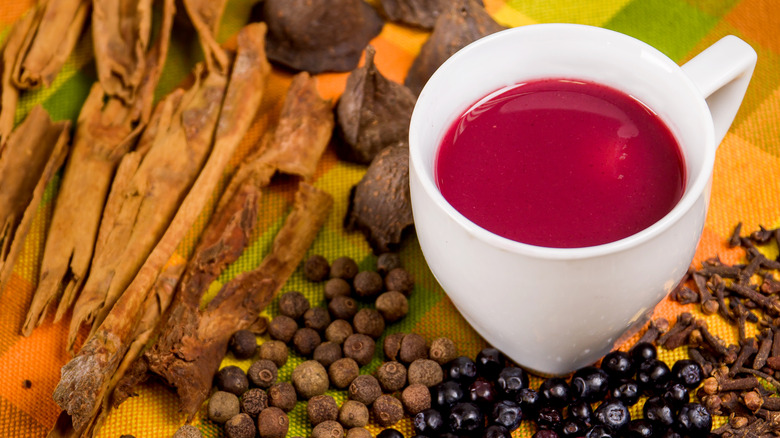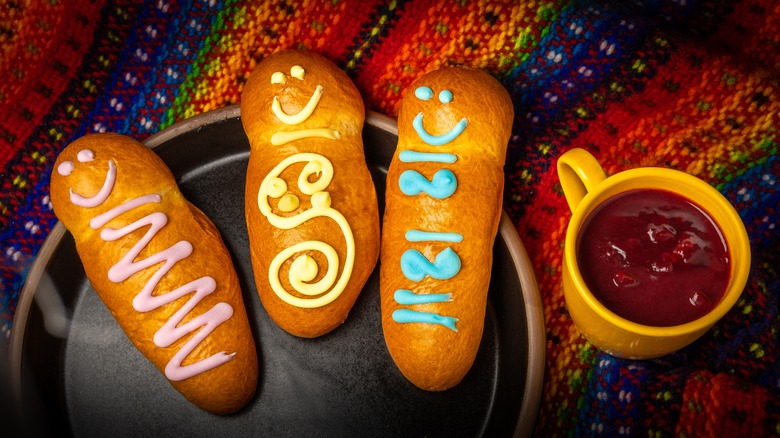The Indigenous Ecuadorean Berry Drink Made For Visiting Tombs
Many Americans are familiar with the Mexican holiday of Día de Los Muertos, or Day of the Dead, whether it be through their friends and family or by its pop-culture depictions, as with Pixar's Coco. Per History, the holiday falls on November 2, when it is said that the gates of heaven open to allow the spirits of the dead to visit their families in the mortal world. It is customary to construct altars for the deceased, known as "ofrendas," where offerings of food are placed. Iconic images of sugar skulls and pan de muerto are familiar sights, even to those who do not celebrate the day themselves.
While most Americans associate the Day of the Dead with Mexico, The New York Times notes that other majority-Catholic countries have their own versions of the holiday. Among English-speaking Catholics, November 2 is known as All Souls' Day. In Brazil, it is Dia de Finados, which Remezcla explains is a very somber, church-oriented day of worship. Filipinos celebrate Undás, a time for people to travel home to their families and make visits to loved ones' graves. In Ecuador, November 2 is known as Día de Los Difuntos (Day of the Deceased), which has strong ties to food and drink. It is customary to enjoy guaguas de pan, a type of pastry shaped like a baby, along with a purple beverage called colada morada.
If you like colada moradas and getting caught in the rain
Colada morada is a smoothie-like drink, though Food & Wine notes it is typically served hot. It is made from a blend of fruit, sugar, spices, and purple corn flour, from which the beverage gets its characteristic hue. It is traditionally consumed during visits to ancestral tombs. Taste Atlas goes into further detail, explaining that pineapples, blackberries, and strawberries are the typical fruit component, and the spices usually include cinnamon, allspice, and cloves. According to Expats Ecuador, the drink's name translates to "strained purple," which is accurate but not nearly as attractive in English as in Spanish.
While colada morada has come to be associated with Día de Los Difuntos, a holiday in the Catholic tradition, it actually traces its origins to indigenous culture. Food & Wine notes that the original berries used in the drink were mora, a type of blackberry cultivated by natives in the Ecuadorian highlands.
Expats Ecuador adds that, prior to the Spanish conquest of their land, the indigenous people of Ecuador celebrated the start of the rainy season in November with the holiday of Aya Marcay Quilla. They would unearth their mummified ancestors and parade them through the village, a practice later banned by the Spanish. However, the colonizers couldn't put an end to the popular purple beverage consumed at the holiday, which became the colada morada we know today.

